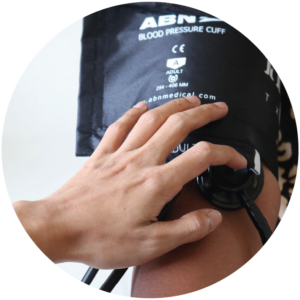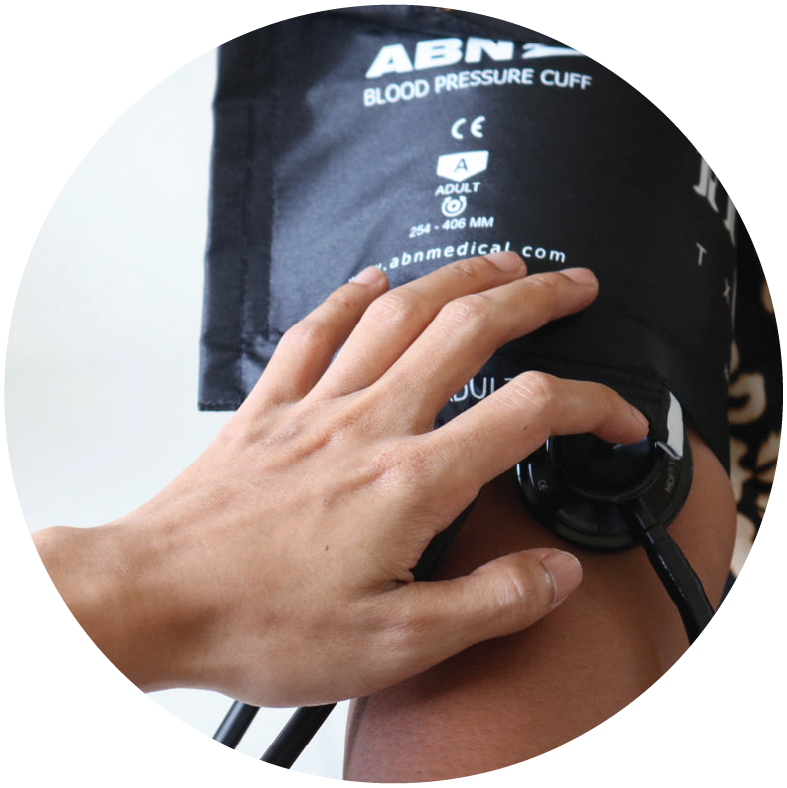Close

Blood pressure is the pressure exerted by the blood on the vessel walls as it flows through them. This pressure is measured with a pneumatic cuff that compresses the arm and gradually deflates. Blood pressure can be taken by a doctor or by the patient himself.
It is measured in millimetres of mercury (mmHg) and is expressed as two numbers:
Blood pressure is extremely variable over the course of 24 hours.
It is usually low at night and during rest periods in the day. It rises even before waking up and has more or less significant peaks during daily activities.
For an adult, an optimal blood pressure is less than 120/80 mmHg.
Blood pressure is considered acceptable when it does not exceed 140/90 mmHg. If it exceeds this value, the diagnosis of hypertension is made.
If you have other risk factors, the acceptable blood pressure limit is lower. For example, it is accepted that the upper limit for someone with diabetes is 130/80 mmHg.
High blood pressure is not uncommon in industrialised countries. In fact, it affects about 1 in 4 people. In Belgium, there are almost 2,500,000 people with high blood pressure. Of these, only 1,250,000 are diagnosed and only 625,000 are treated for hypertension.
High blood pressure is a condition that, in most cases and for a long time, develops quietly. It is a “silent” disease and the person with high blood pressure does not feel sick.
High blood pressure predisposes :
Together with other risk factors, hypertension can increase the probability of a heart or stroke by a factor of 2 or 3. This situation of the accumulation of several risk factors, even if not very pronounced, is very dangerous and unfortunately extremely common.
Without cumulating with other cardiovascular risk factors, the risk associated with hypertension remains relatively modest as long as blood pressure values do not exceed 160/100 mmHg.
Many studies have shown that treatment of hypertension reduces the likelihood of heart and cerebrovascular problems. However, the figures, although reassuring, clearly indicate that treatment does not reduce the risk to the level of people who have never had high blood pressure. This highlights the importance of investigating and treating other associated risk factors.
Only by systematically measuring blood pressure at every medical contact can high blood pressure be detected. It should be noted that the frequency of hypertension increases with age and affects 60% of elderly people.
More info: www.liguecardioliga.be/hypertension
